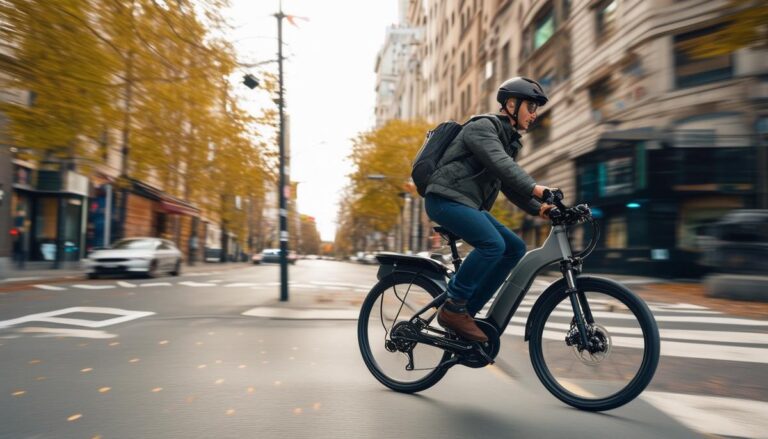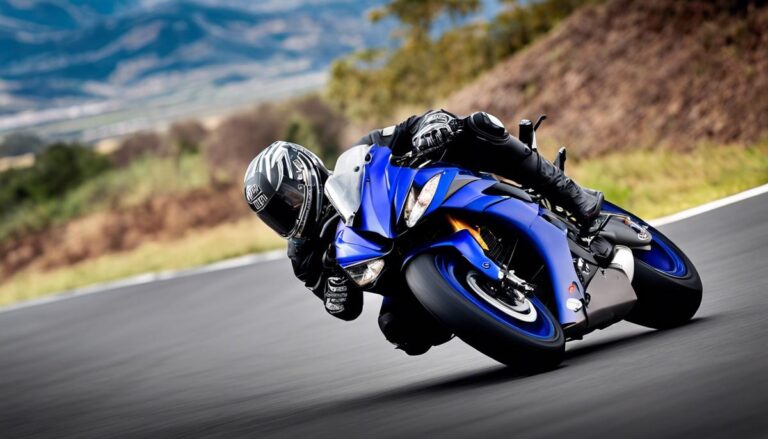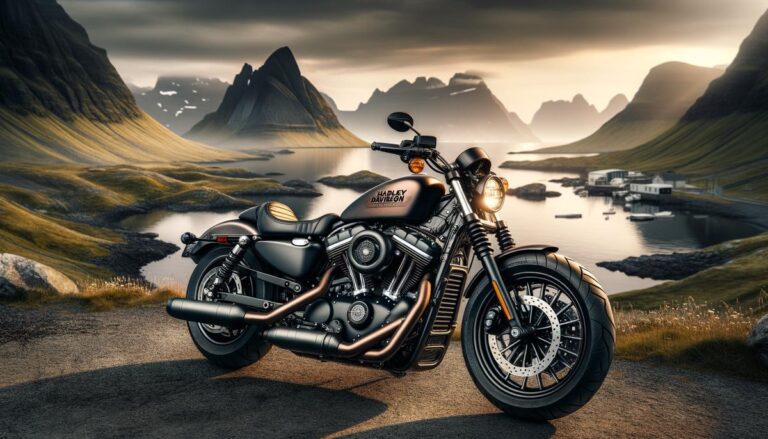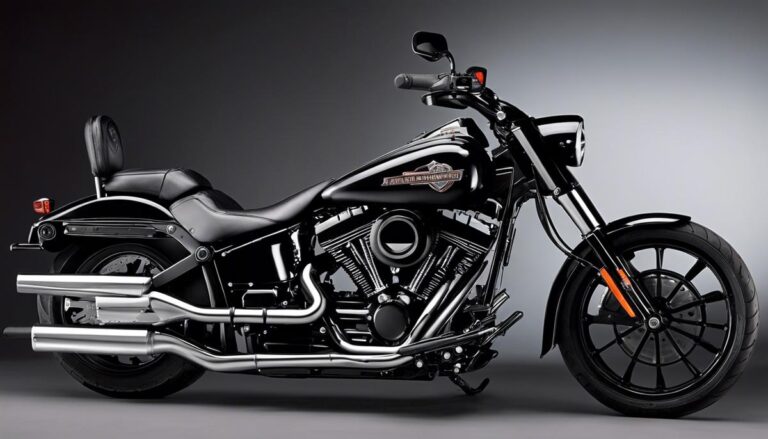Indian vs Harley vs Triumph: Deciding the Best Bobber Bike
In the world of motorcycles, the Bobber stands out as a symbol of freedom, individuality, and a throwback to simpler times. With their stripped-down aesthetics and iconic designs, Bobbers etch a unique story in the motorcycling universe. Born from a spirit of rebellion in the 1930s, this icon has continued to evolve, capturing the hearts of motorcycle enthusiasts worldwide. Motivated by the current resurgence in popularity of these classic beasts, this analysis takes a deep dive into three prominent Bobber brands – Indian, Harley Davidson, and Triumph. We will ride through the journey of the Bobber, explore the history of these three studios, scrutinize their design and features, and finally, pit them against each other in a comparative standoff. Expect an enriching ride as we throttle into this in-depth study, all set to help you decide which Bobber is your calling.
Overview of Bobber Bikes
Understanding Bobber Motorcycles
The term bobber refers to a type of custom motorcycle that gained popularity in the 1930s, primarily among American servicemen returning from World War II. These stripped-down, simplistic motorcycles, often based on Harley Davidson models, were designed to be lighter and faster for illegal street racing. The distinguishing feature of a bobber is its ‘bobbed’ or shortened fender, which gave the bike a cleaner, more streamlined look. Today, many manufacturers, including Indian, Harley, and Triumph, produce bobber-style motorcycles.
Indian, Harley, and Triumph: Key Features
Modern Indian bobbers, such as the Scout Bobber, maintain the classic bobber style with a stripped-down, minimalistic design. The Scout Bobber is renowned for its premium finishes, including blacked-out detailing, a 69-inch V-twin engine, and a comfortable leather seat. This bike emphasizes performance and power but doesn’t sacrifice the iconic aesthetic that makes a bobber stand out.
Harley Davidson’s bobbers, particularly represented by models like the Softail Slim, inherit the legacy of American motorcycle culture. Harley bobbers are known for their robust, high-torque engines and the signature low ride-height that the brand is famous for. The Softail Slim, with its classic bobber style elements, including high, wide handlebars and chopped fenders, certainly leaves a lasting impression.
The British manufacturer Triumph’s bobbers, like the Bonneville Bobber, offer a distinct blend of British engineering and timeless bobber style. Triumph’s bobber stands out with its unique floating aluminum seat, twin slash-cut exhausts, and clean lines. With its 1200cc high-torque engine, the Bonneville Bobber delivers class-leading torque and power.
Performance Comparisons
In terms of performance, the Indian Scout Bobber boasts a 100-horsepower engine capable of delivering a smooth and thrilling ride. Harley Davidson’s Softail Slim, on the other hand, comes with a Milwaukee-Eight 107 V-Twin engine, providing an impressive output of 110 ft-lb of torque. Meanwhile, Triumph’s Bonneville Bobber is equipped with a 1200cc high-torque engine, leading the pack with its remarkable torque delivery.
Price and Value
When it comes to price, all three bobbers fall into a similar range, making choice largely dependent on personal preference and brand loyalty. Both the Harley Davidson Softail Slim and the Indian Scout Bobber are priced at around $15,000, while the Triumph Bonneville Bobber comes in slightly more expensive, at around $16,000. However, each one offers value through its unique aesthetics, performance features, and reliability.
The selection between an Indian, Harley, or Triumph bobber largely depends on the rider’s personal taste. Each motorcycle brand brings its own unique sense of power, tradition, and flair to their bobber models. The Indian Scout captures the rugged spirit of American muscle, whilst the Harley Softail Slim exudes a rich heritage. Alternatively, the Triumph Bonneville offers a dose of British charisma. At the end of the day, the ‘best’ bobber is genuinely personal. What remains consistent across the board, however, is the timeless appeal of bobber motorcycles; their stripped-back style and raw power never go out of style.

Indian Bobber: A Detailed Analysis
Diving deeper into these bobbers, we start with the Indian Bobber. This iconic motorcycle debuted in 2018 as part of the revered Indian Scout series. It’s known for its blend of minimalist design and imposing stance, with a distinct American vintage appeal. It draws inspiration from the early 1900 Indian motorcycles, particularly the Scout models celebrated for their uncompromising power, reliability, and legendary racing reputation.
Design and Specs of the Indian Bobber
Still maintaining its minimalist design and low-slung stance, the Indian Bobber is powered by a 1133 cc, liquid-cooled, V-Twin engine that puts out 94 horsepower. It has a low seat height of 649 mm, an overall width of 926 mm, and weighs 255 kg, making it considerably heavier than its counterparts.
Among the stand-out features of the Indian Bobber are its chopped fenders, bar-end mirrors, a 15.9 liters fuel tank, and forward-set foot controls; all adding to its muscular look and overall riding comfort.
Riding Experience on the Indian Bobber
Riding the Indian Bobber can be both exciting and comfortable. The bike’s well-tuned suspension system ensures a smooth ride on different terrains while a comfortable seat allows for extended periods of riding without discomfort. The Indian Bobber’s strong brakes, along with the ABS, provide reliable stopping power. However, its 130mm of ground clearance and bigger turning radius might feel restrictive for some riders.
Consumer and Expert Reviews on the Indian Bobber
Consumers and experts alike praise the Indian Bobber for its impressive torque curve, excellent ride quality, and the bike’s premium feel. Critics also admire its stunning aesthetics and sturdy build quality. However, it attracts criticism for its price which is on the higher side compared to similarly-designed motorcycles.
Comparing Indian, Harley, and Triumph Bobbers
When examining the Indian Bobber, Harley-Davidson Sportster, and Triumph Bonneville Bobber, each motorcycle showcases unique advantages. Harley-Davidson’s Sportster garners attention for its substantial potential for customization and a committed fan base. However, it falls short when it comes to suspension and comfort while riding.
Triumph’s Bobber, on the other hand, is celebrated for its powerful 1200cc high-torque engine, premium fixtures, and quintessential British design. Yet, it doesn’t quite measure up in the comfort and handling department, especially during prolonged rides.
The Indian Bobber, often admired for its vintage aesthetic, impressive horsepower, and comfortable ride, stands out when factors such as cost, design power, and ride comfort come into play. The final choice, however, is contingent upon the individual rider’s personal preference.

Harley Davidson Bobber: An In-depth Study
Harley-Davidson Bobber: A Classic American Icon
Harley-Davidson, a company deeply rooted in American culture, began manufacturing motorcycles in the early 20th century. The Harley Bobber borrows its minimalist, stripped-down design from traditional Harley-Davidson cruisers. Initially, bobbers were customized by owners who removed the front fenders and trimmed the rear ones, rendering a distinctive appearance. Responding to a burgeoning demand, Harley-Davidson started rolling out factory-built bobbers offering the same unmatched power and rugged aesthetic inherent in their custom counterparts.
Design and Features of the Harley Bobber
The design of the Harley Bobber nods to vintage motorcycling, with a low-slung, reductive style that is both timeless and distinctive. The Harley Bobber typically features a solo seat, ape-hanger handlebars, small fuel tank, and no-nonsense blacked-out color scheme. Harley Bobbers are also renowned for their powerful V-Twin engines, providing both grunt and reliability to riders.
The Harley Bobber isn’t just about form over function, though. A comfortable ride and the presence of modern technology, such as digital gauges and LED lighting, are also highlights of these models.
The Riding Experience of a Harley Bobber
Riding a Harley-Davidson Bobber is a unique experience. The models’ powerful engines and vintage aesthetics are known for turning heads on the road. Riders appreciate the responsive handling and considerable low-end torque, which deliver an exhilarating ride. The Harley Bobber makes a statement about the rider’s taste, offering a blend of old-school style and modern technology.
Comparing Harley with Indian and Triumph Bobbers
When compared with the Bobbers from Indian Motorcycle and Triumph, the Harley Bobber holds its own.
Indian Motorcycle, another American brand with a long history, also offers bobbers in its lineup. These motorcycles, particularly the Scout Bobber, boast a design similar to the Harley, although some riders argue that the Indian provides a smoother ride. The Indian Bobber also has a slightly more modern look, which some riders prefer.
Triumph Bobbers, produced by the renowned British motorcycle manufacturer, also compete well in this category. The Triumph Bobber brings a more European aesthetic and feel to the bobber class. Unlike the previously mentioned American brands, Triumph tends to incorporate more modern and refined elements, including a sleek design and advanced technology features, without compromising the traditional Bobber look and ride.
Despite the stiff competition, each of these brands offers something unique to the bobber category. The best bobber ultimately depends on a rider’s personal preferences. While the Harley Bobber offers a raw and rugged ride with a lot of character and classic American style, the Indian Bobber is known for its more modern aesthetics and smoother ride. On the other hand, the Triumph Bobber prides itself on European sophistication and sleek design.
Expert and Consumer Opinions
When it comes to bobber-style motorcycles, professionals and dedicated riders alike often hold the Harley Bobber in the highest esteem. Known for its potent combination of power, performance, and unmistakable style, this motorcycle is truly a stand-out option in the market.
That being said, the Indian and Triumph Bobbers are equally praised for their exceptional offerings. While the Indian Bobber is consistently noted for its comfortable ergonomics and smooth riding experience, the Triumph Bobber turns heads with its unique European design flair and refined craftsmanship.
Despite each having distinct characteristics, Hoarley, Indian, and Triumph are all known for their top-tier bobber motorcycles. The decision of which is ‘best’ invariably depends on each individual rider’s personal preferences, including factors like aesthetic, performance capability, comfort, and of course, price point.

Photo by dominostudio on Unsplash
Triumph Bobber: A Comprehensive Review
Exploring the Triumph Bobber
Joining the prestigious Bonneville family, the Triumph Bobber was introduced with the intent of bringing the iconic classic bobber aesthetic back to life. This style is typically associated with a minimalist, stripped-back design, single seat features, and broad, flat handlebars. Since its launch in 2017, the Triumph Bobber has garnered a significant following for expertly merging the charm of 1940s bobber style with the potency of contemporary, high-performance motorcycle technology.
Indian Chief Bobber Comparison
When comparing the Triumph Bobber to its rivals, the Indian Chief Bobber is a notable contender. The Indian Chief Bobber showcases a blend of nostalgia and technology with its 1901-era engine design coupled with fuel injection, cruise control, keyless ignition, and touchscreen display for GPS and riding stats. Yet, the Triumph Bobber stands apart with its superior suspension system, providing a smoother and more comfortable ride. Additionally, the Triumph Bobber features modern ABS braking and switchable traction control, which the Indian variant lacks.
Harley Davidson Softail Slim as a Rival
Another prominent rival is the Harley-Davidson Softail Slim which borrows its design cues from the post-world war era. Though it delivers on the promise of a raw, stripped-down riding experience, riders have reported a heavier feel when compared to the Triumph Bobber. Further, Harley’s Softail Slim lacks the agility and responsiveness that the Triumph Bobber offers due to its design which places emphasis on low-speed stability and not on delivering the sharp handling that Triumph does.
Unique Features of Triumph Bobber
Unique characteristics set the Triumph Bobber apart. It features a monoshock rear suspension concealed under the seat, an adjustable forward and back floating aluminum single seat, and a lower stance than most Triumph motorcycles. The Triumph Bobber has two riding modes, Road, and Rain, which adjust throttle sensitivity and traction control settings to match the riding conditions. Furthermore, it comes with an engine immobilizer as a standard safety feature.
Expert Evaluations and Rider Reviews
From expert evaluations and rider reviews, it is clear that Triumph Bobber is highly acclaimed for its performance, comfort, and style. Riders have praised it for its responsiveness, agility, and the versatility it offers with the adjustable riding modes, which gives a unique riding experience. They often highlight Triumph’s attention to comfort, with high praise given to the adjustable seat and responsive suspension.
Pros and Cons
Each bobber certainly has its pros and cons. Triumph Bobber shines in performance, design, and rider comfort but falls slightly short in terms of fuel efficiency and lacks the accessory range provided by Harley and Indian. The Indian Bobber offers a magnificent display of raw power and torque, but lacks in terms of handling and comfort. Harley’s Softail Slim provides a raw and powerful riding experience, but lacks in handling and agility compared to Triumph.
Final Thoughts
Tackling the question of which bobber outshines the rest – Indian, Harley, or Triumph – is not one that yields a clear-cut answer. This is largely due to the fact that individual preferences and personal experiences play a pivotal role in one’s choice. Between the robust Indian Chief Bobber and the formidable Harley Davidson Softail Slim, both with their distinct qualities, the Triumph Bobber stands out for its superb fusion of style, performance, and rider comfort. However, in order to make an informed decision, potential buyers are encouraged to conduct personal test drives to find the motorcycle that best aligns with their preferences.

Comparative Analysis of Indian, Harley, and Triumph Bobbers
Indian Scout Bobber
The Indian Scout Bobber, a product of America’s earliest motorcycle company, strikes a perfect balance between heritage and modern technology. With its liquid-cooled 1133cc V-Twin engine, it churns out an impressive 100 horsepower, setting it amongst the most powerful bobbers in the market. It further entices with its real leather seats, bar-end mirrors, and blacked-out finishes that beautifully encapsulate its seamless blend of nostalgic and contemporary appeal.
Major advantages of the Indian Scout Bobber include its robust and seamless engine, high-grade build quality, swift handling, and undeniably suave visual appeal. However, it’s worth noting that it’s slightly on the higher end of the price spectrum, offers limited wind protection, and the forward foot controls may prove to be too far stretched out for comfort during extended rides.
Harley-Davidson Softail Street Bob
An epitome of Harley heritage, the Softail Street Bob comes with a Milwaukee-Eight 114 V-Twin engine—the most powerful street-compliant engine from Harley. With its stripped-down, minimalist style, the Street Bob upholds the traditional bobber spirit.
Its high-torque engine, distinctive Harley sound, and customizability are major positives. The Softail suspension offers some level of comfort, though it can be stiff for some riders. On the downside, the Street Bob is expensive, and its heavier weight can affect maneuverability for new riders.
Triumph Bonneville Bobber
The Bonneville Bobber from Triumph melds the brand’s classic British roots with contemporary technology. Its 1200cc high-torque engine and stripped-back style make a compelling bobber statement. It’s renowned for its balance between power and comfort, offering arguably the most comfortable ride among the trio.
The Bonneville Bobber is noted for its effortlessly cool design, solid performance, and a comfortable ride. It also comes with tech features like ABS, switchable traction control, and riding modes. However, criticisms include its small fuel tank that limits its range and the lack of pillion seat as standard.
Conclusion
Choosing the best bobber depends on the rider’s preference, budget, and needs. The Indian Scout Bobber pairs power with style, capturing traditional aesthetics wonderfully. The Harley-Davidson Softail Street Bob offers a pure American cruiser experience with the iconic Harley roar. The Triumph Bonneville Bobber might be perfect for riders who want classic styling complemented by advanced tech and superior comfort.

Having traversed the rich histories, distinctive designs, and unique features of Indian, Harley Davidson, and Triumph Bobbers, we arrive at a unique crossroad. Each Bobber has its own loyal fanbase, shaped by its strong historical lineage, impeccable design, and unmatched ride experience. The choice, however, is personal and depends on one’s preferences, budget, and needs. Regardless of which Bobber you lean towards, remember that each comes with its own unique flavor of freedom. The Bobbers from Indian, Harley, and Triumph remain true to their roots while embracing the future, offering a balanced blend of classic and contemporary. Here’s to the unrivaled spirit of Bobbers, forming an indelible part of the motorcycling ethos!







